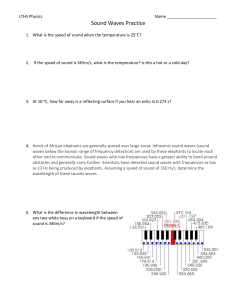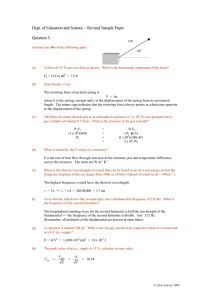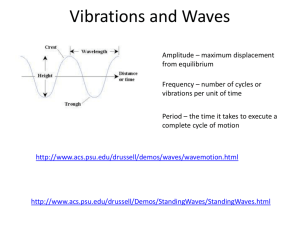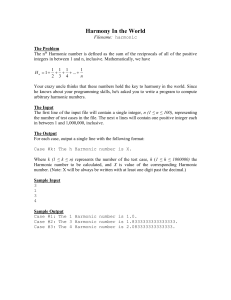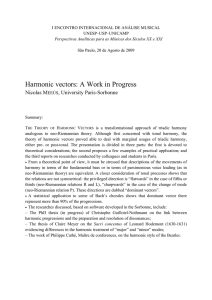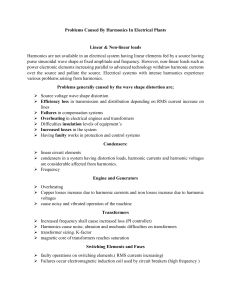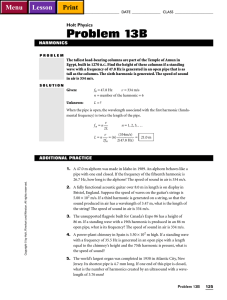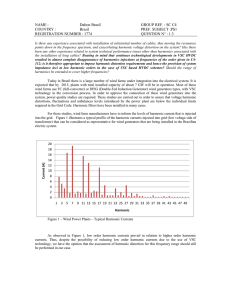Answers to problems for Waves # 35, 38,45, 49... 35. The wave speed is given by
advertisement
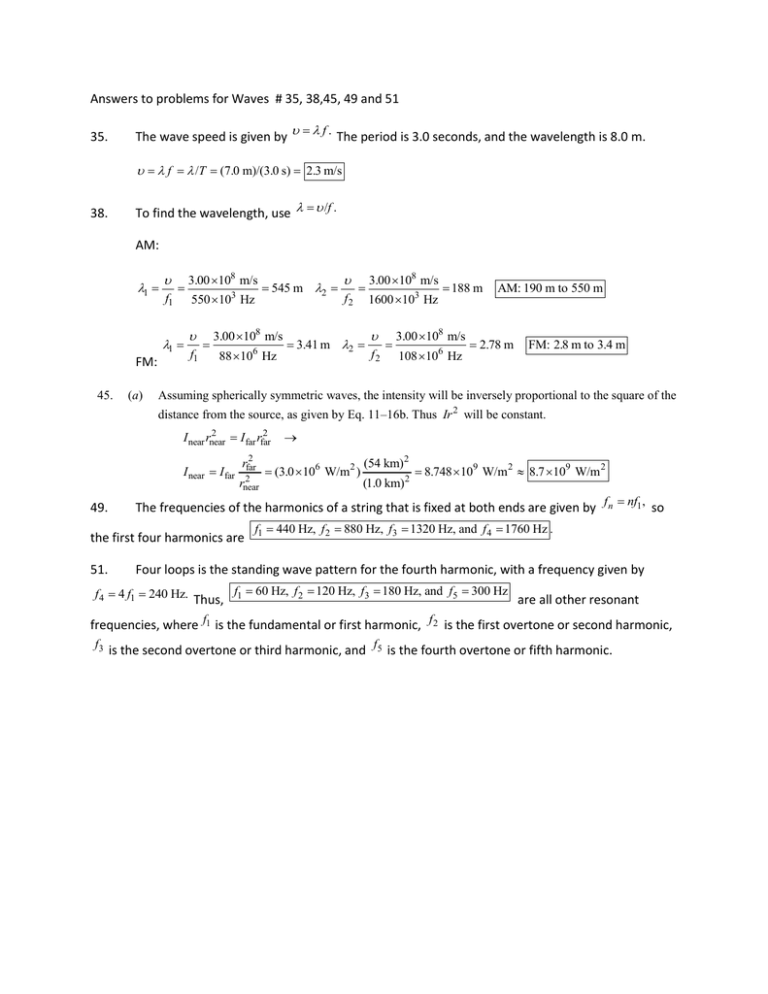
Answers to problems for Waves # 35, 38,45, 49 and 51 35. The wave speed is given by f . The period is 3.0 seconds, and the wavelength is 8.0 m. f /T (7.0 m)/(3.0 s) 2.3 m/s 38. To find the wavelength, use /f . AM: 1 f1 3.00 108 m/s 1 FM: 45. (a) 550 103 Hz f1 545 m 2 3.00 108 m/s 88 106 Hz f2 3.41 m 2 3.00 108 m/s 1600 103 Hz f2 188 m 3.00 108 m/s 108 106 Hz AM: 190 m to 550 m 2.78 m FM: 2.8 m to 3.4 m Assuming spherically symmetric waves, the intensity will be inversely proportional to the square of the distance from the source, as given by Eq. 11–16b. Thus Ir 2 will be constant. 2 2 I near rnear I far rfar I near I far 49. 2 rfar 2 rnear (3.0 106 W/m2 ) (54 km)2 (1.0 km) 2 8.748 109 W/m 2 8.7 109 W/m 2 The frequencies of the harmonics of a string that is fixed at both ends are given by f n nf1 , so the first four harmonics are 51. f1 440 Hz, f 2 880 Hz, f3 1320 Hz, and f 4 1760 Hz . Four loops is the standing wave pattern for the fourth harmonic, with a frequency given by f 4 4 f1 240 Hz. Thus, f1 60 Hz, f 2 120 Hz, f3 180 Hz, and f5 300 Hz are all other resonant frequencies, where f1 is the fundamental or first harmonic, f 2 is the first overtone or second harmonic, f3 is the second overtone or third harmonic, and f5 is the fourth overtone or fifth harmonic.

